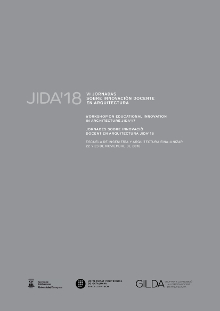The Design of the Auto, Co-Evaluation and Rubric as Strategies to improve learning
DOI:
https://doi.org/10.5821/jida.2018.5433Abstract
This proposal presents the self and the co-evaluation as part of the learning process of the students enrolled in studio subjects of the architecture studies, although it could also be extrapolated to other teachings related to design. The role of the professor in the elaboration of the evaluation, the methodologies used and the outcome analysis are studied. The previous problematic that leads to the realization of this type of evaluations is related to the demand on the part of the students of greater clarity and objectivity in this phase, which becomes an opportunity that implies a process of improvement in the evaluation of their works, since the student is involved in their learning and evaluation process, improving their critical capacity. Reference is made to previous teaching experiences such as a workshop carried out among four European universities and a self-assessment and a peer assessment carried out on students of fourth-year architectural projects following two different methods.
References
AAVV (2004). AD: Back to school: Architectural Education, Architectural Design. Vol. 74. No 5.
AAVV (2005). La formación del arquitecto, Quaderns d'arquitectura i urbanisme, Barcelona, 2005
AAVV (2007). Estrategias de formación, Arquitectos 180, 2007
FERNANDEZ MARCH, A. (2010) La evaluación orientada al aprendizaje en un modelo de formación por competencias en la educación universitaria. REDU VOL 8(1)
FLORINA GATICA, L. (2012) ¿Cómo elaborar una rúbrica? Elsevier
GARCÃA-HÃPOLA, M (2015). “Intensive Program: una nueva experiencia de aprendizaje en el campo de los Proyectos Arquitectónicosâ€. Nuevas formulaciones de los contenidos docentes. Mc Graw-Hill Education. Colección: innovación y vanguardia universitarias.
MERTLER, CRAIG A. (2001). Designing scoring rubrics for your classroom. Practical Assessment, Research & Evaluation, 7(25)
POPHAN, W.J. (1997) What´s wrong and what´s right with rubrics?. Educational Leadership, 55(2).



















